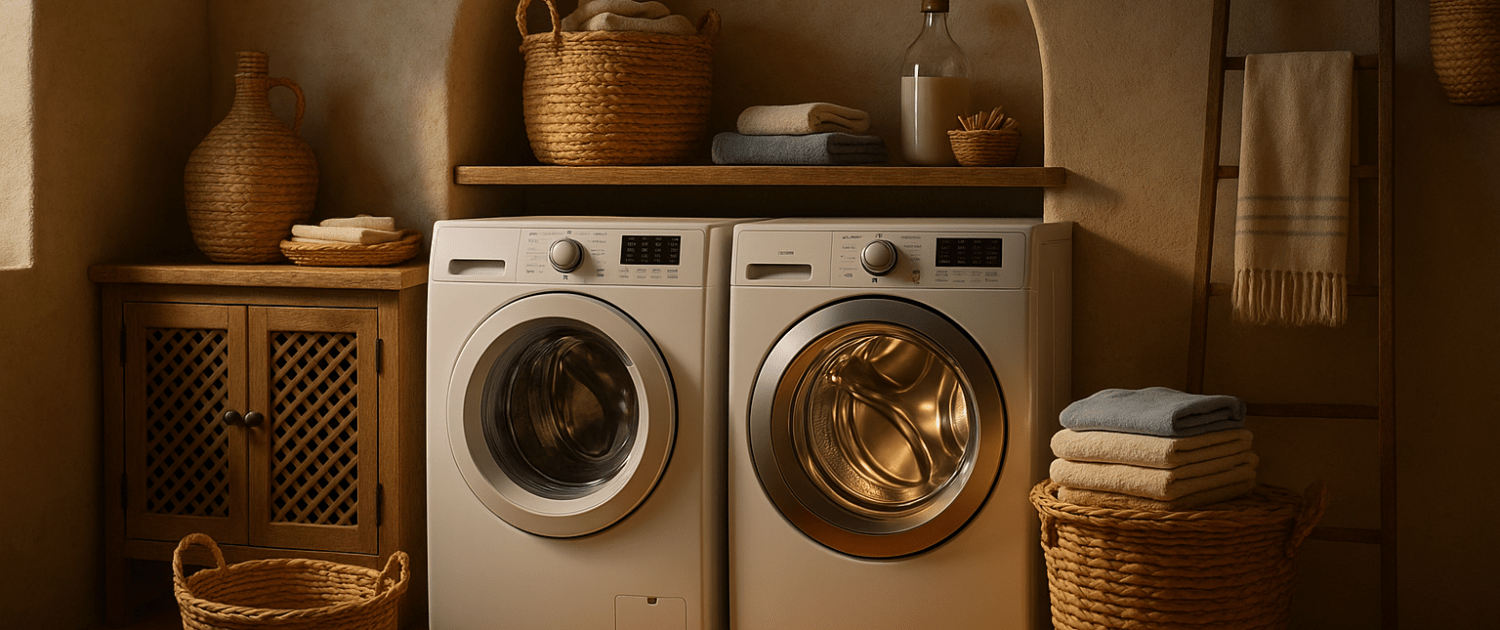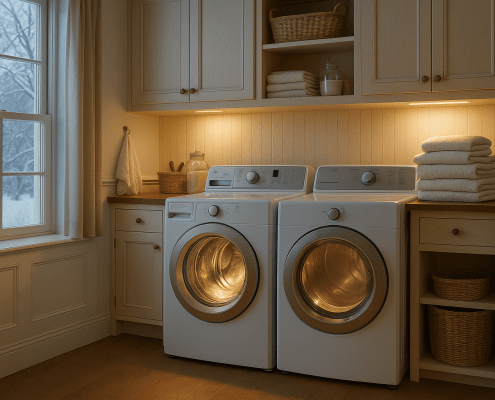Common Electric Kenmore Dryer Noises and How To Fix Them
Steven E / Friday June 6, 2025
If you’ve got a Kenmore electric dryer that’s suddenly turned into a noisy monster, you’re definitely not alone. When your dryer starts making weird noises like a clunk, squeak, or persistent hum, it can get on your nerves. We’re here to help you figure out what’s going on and how to get your dryer back to its quiet self.
If you find out that you need any replacement parts for your appliance while you’re troubleshooting, you can enter your model number at AppliancePartsPros.com to order them. Most orders arrive in just two business days, and we have thousands of free guides to show you how to install your new parts.
The troubleshooting information in this article is based on model 11068722700 and may not apply to your specific appliance model. We recommend consulting your manufacturer’s documentation or contact us with any questions.
Safety precautions
When working on any appliance, remember to keep safety first. Here are some tips to keep in mind:
- Always power off and unplug your appliance or switch off the circuit breaker before attempting any maintenance or replacement work. This keeps you safe by preventing any risk of injury from electric shock.
- Wear insulated work gloves to protect your hands from sharp metal parts, pinching hazards and debris.
- Take your time and don’t rush while working to prevent accidents and personal injuries.
- Work in a well-lit area so you can clearly see and access the interior parts.
- Clear your workspace of clutter and other obstacles. Keep children and pets away from the work area.
- Never work on internal parts with bare wet hands. Make sure the work area is completely dry.
- Check your user manual to see if there are specific installation or safety instructions for your part or appliance.
- Be gentle when handling or removing parts. Excessive force might damage the appliance or cause injury.
- Wear safety glasses when working with chemicals, dust or cleaning large debris to prevent injury.
- If the appliance has recently been used, give it plenty of time for any heating parts to cool down before working on it.
- Take pictures or make a note of wiring terminals or other connections before disconnecting to prevent any problems with reassembly.
- When working with wires, avoid touching any exposed wires or terminals. If you need to touch a wire, use a non-conductive tool or wear insulating gloves to prevent electrical shock.
Tools and materials needed
- 1/4 inch nut driver
- Putty knife
- #20 torx bit
- Small flat head screwdriver
- Shop vac
Troubleshooting steps
Disassembly
- Use a putty knife to push in on the two clips at the corners of the console.
- Gently push the console up and back.
- Unscrew the three ¼ inch screws holding the top in place.
- Slide the top towards the front and lift it off.
- Disconnect the door switch.
- Push in on the two clips holding the front panel with a putty knife.
- Remove the two door springs.
- Open the door and take out the lint screen.
- Use a ¼ inch nut driver to remove the three screws securing the blower housing.
- Carefully take off the blower housing.
- Find and remove the yellow wire attached to the bottom of the front bulkhead.
- Remove the two ¼ inch screws at the bottom of the front bulkhead.
- Use a Torx 20-bit to take out the two screws at the top of the front bulkhead.
- Carefully lift the front panel off.
Drum roller
What to listen for: A rumbling or wobbling sound usually indicates failing drum rollers.
How to check:
- After following the disassembly steps, reach under the drum and release the belt from the idler pulley.
- Use the drum belt to lift the drum out of the cabinet.
- Inspect the rollers: turn them by hand. If they are hard to turn or wobble, replace them.
This dryer typically has two rollers on both the front and back bulkheads, so replace them all at once.
Drum belt
What to listen for: A rhythmic clicking noise can indicate a worn-out drum belt.
How to check:
- Follow the disassembly steps to access the drum.
- With the drum lifted out, closely examine the belt.
- Look for cracks or missing pieces. If damaged, the belt needs replacing.
Belt tension roller
What to listen for: A squealing noise while the dryer is running often points to a worn belt tension roller (idler pulley).
How to check:
- Follow the disassembly steps to access the drum.
- Reach under the drum and release the belt from the idler pulley.
- Lift the drum out of the cabinet.
- Turn the idler roller by hand. If it’s hard to turn or shows grooves from the belt, it needs replacing.
Blower wheel
What to listen for: A rumbling or grinding noise could be caused by a clogged or off-balance blower wheel.
How to check:
- Open the door and take out the lint screen.
- Use a putty knife to push in on the clips holding the bottom panel and set it aside.
- Use a ¼ inch nut driver to remove the three screws holding the blower housing.
- Remove the housing along with the yellow sensor wire.
- Look closely at the inside of the blower wheel for lint build-up.
- Use a shop vac and a small screwdriver to clean out any lint or debris.
- Check for foreign objects that could be causing noise.
Additional information
Thank you for reading! We hope this guide helped you get your Kenmore dryer working again.
If you have any other appliance repair needs or projects, don’t hesitate to explore our other troubleshooting guides and videos.
If you need replacement parts or some extra help with ordering them, grab your model number and head over to AppliancePartsPros.com, where you can chat with a pro, read our DIY blog and more.
Be sure to subscribe to us on YouTube and follow us on Facebook, Twitter and Instagram!
With nearly a decade of experience in providing top-notch customer service regarding appliance parts and repair, Steven enjoys sharing practical advice, troubleshooting tips, and interesting information to help readers stay informed.





